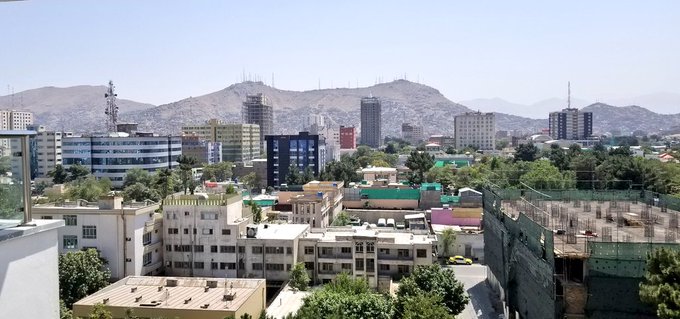BLOG
August 22nd, 2018
Via Global Voices, an interesting look at Afghanistan’s water crisis:
Landlocked Afghanistan wasn’t always short of water. Historically the valleys in this part of Asia were agricultural heartlands that hosted rushing rivers fed by abundant glaciers. Now, things are changing.
A hot, dry summer has exacerbated a severe drought that has affected northern and western Afghanistan in particular. Some say it is the worst drought that these regions have faced in several decades. In regions such as Balkh, Ghor, Faryab, Badghis, Herat and Jowzjan, farmers have been put out of work due to a lack of water to irrigate crops.
Groundwater levels have declined sharply in the capital Kabul in recent years. The U.S. Geological Survey said that the groundwater level in Kabul declined by an average of 1.5 meters per year between 2004 and 2012. Weak regulation of privately owned water pumping stations means that there are few possibilities to control consumption. All groundwater in the capital will go dry in the next 10 years, Afghan officials predict.
The rainfall that would replenish such supplies is growing less frequent, while potential solutions to the problem — dams and water treatment plants — are typically very expensive.
Four decades of war
The nearly half century of war in Afghanistan has wrecked infrastructure, including water-carrying infrastructure. In Kabul, private citizens took over the government’s responsibility to provide safe drinking water.
Still, it is estimated that 80% of the 6 million population of the city lack access to potable water, while according to a study by German Federal institute for Geoscience and Natural Resource, 59% of the water in the urban areas of Kabul is contaminatedwith bacteria.
Not only has Afghanistan’s war destroyed existing infrastructure, it has also held back plans to build new infrastructure.
Because of a lack of reservoirs, canals and dams, only 30-35% of the water coming out of the mountains of the country stays in Afghanistan, while the rest goes to neighbours.
Solving Afghanistan’s water crisis nationwide could cost as much as $11 billion. Donor fatigue meanwhile has meant a reduction in aid to the country rather than an increase. Security challenges are also a disincentive to building infrastructure. In 2017, the India-sponsored Salma Dam in the western Herat Province was attacked by the Taliban with 10 Afghan army soldiers killed in the clashes.
A changing climate and a fast-growing population
Despite making a negligible contributions to the massive energy and industrial consumption that has driven global warming, Afghanistan is already living face-to-face with the consequences of climate change.
Lack of rain and snowfall in the winter have been compounded by high temperatures in the summer. Scientists have warned that higher average temperatures will quicken the retreat of strategic glaciers that are already shrinking. With the possible exception of the Panjshir Valley and a few other areas of the country where water remains plentiful, Afghanistan is racing towards desert status.
A fast-growing population only compounds the problem. Today Kabul is a dust-coated city of over five million people that only has the infrastructure to support a population a fifth that size.
By 2050, Kabul’s population is expected to reach 9 million, making it the fifth fastest-growing city in the world. Refugees are returning. People are fleeing the threat of insecurity in the countryside. In total, more than 80% of the population lives in unplanned settlements. Many of these residents buy water from well-diggers or attempt to dig wells themselves.
Afghanistan’s Central Statistics Organisation has predicted that the country’s population as a whole will reach 43 million in the next 20 years from 37 million at present, adding to the existing to the stress on precious water sources. For the moment, there are plenty of warning signals and no positive developments in sight.




